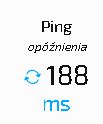Quote: What can you give to link to your users to make it good. We have a housing estate in the city (tight buildings) and we want 50 users there, and each of them wants to have, for example, 30Mbps. Even assuming a simultaneousness of 50%, the transmitter would have to squeeze out of itself 750Mbps. So let's count what costs.
Apparently, my friend knows the theories of building a radio network and has never done one himself.
I have an example from my network, the network has been working since May, I have about 200 clients, a lot of CS players, I sell packages up to 80 mega (YES Radio)
And I haven't had a single complaint yet that the ping is high, the net is bad or something like that.
Yes, there are complaints that something does not work, but it is only electronics, sometimes the client's router freezes, sometimes the antenna.
This is verified by the fact that people are giving up neostrada for my network.
If you are setting up a network with a get-rich-quick scheme in mind, I have to recover from the mistake, it is impossible in the long run. Because customers will verify it very quickly and let it go with the bags.
The golden rule I follow is selling the Internet only from the base connected to the optical fiber, or a good radio link and not making radio chicks, unless the client is aware of it and cares about the connection, I will explain to him beforehand how it works and what the risks are. But fortunately I don't have many of them.
It all depends on whether you do what you like and earn money by the way, or do what you have to and try to earn as much as possible before (the loser) realizes that he is pounded in the horns.







